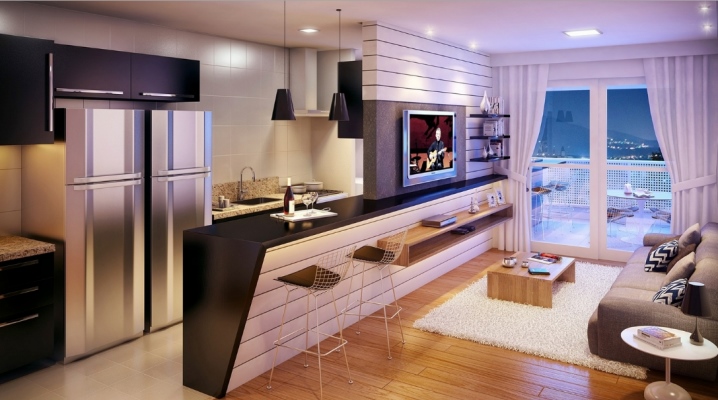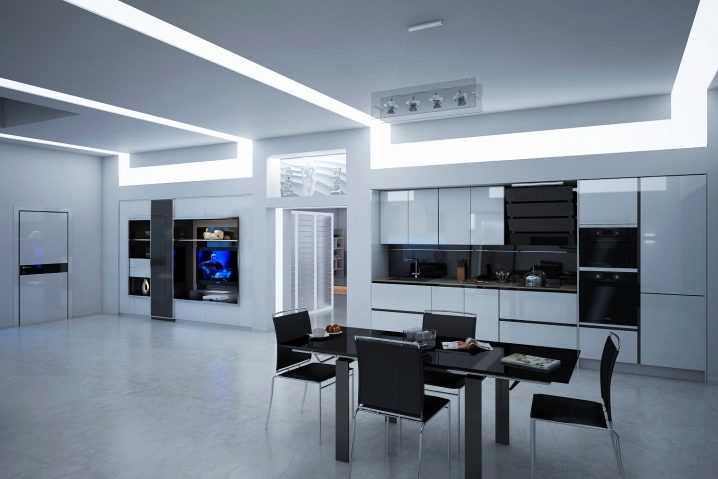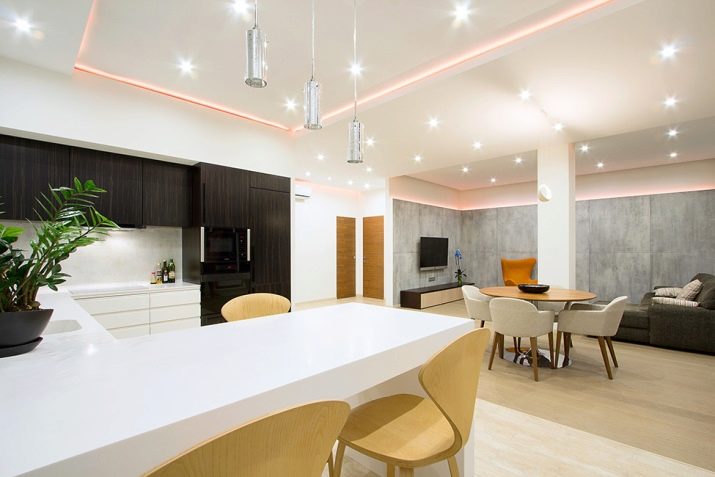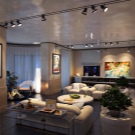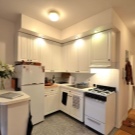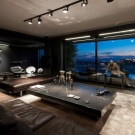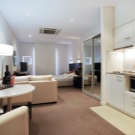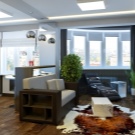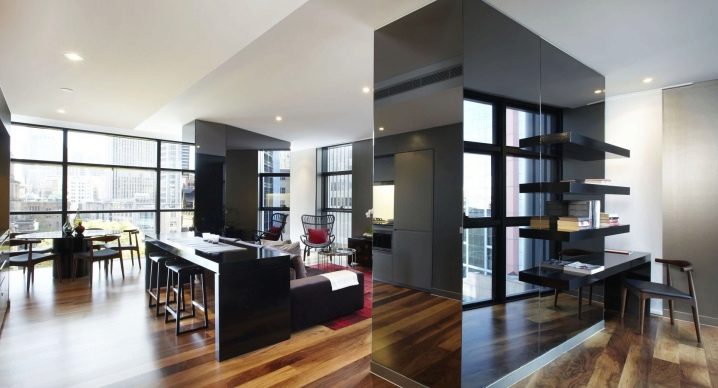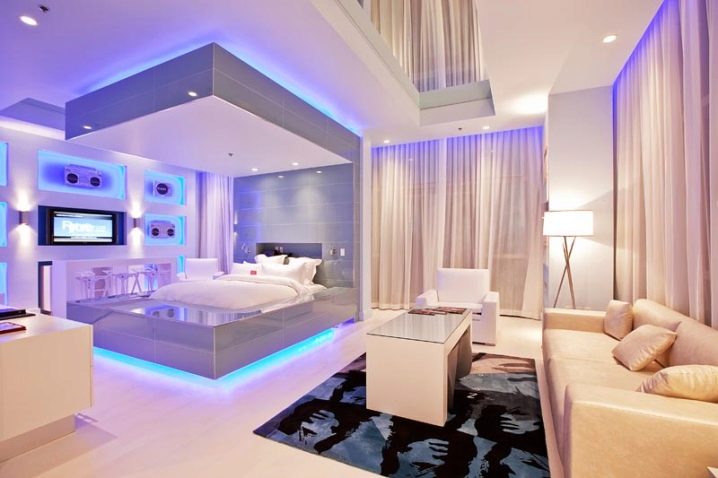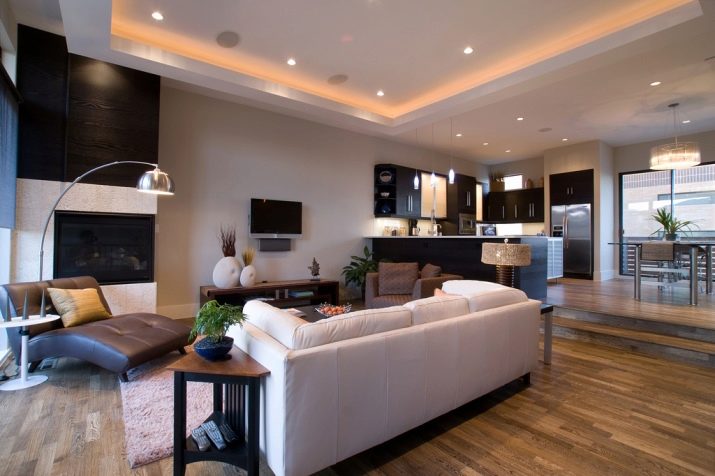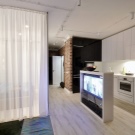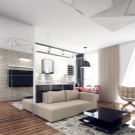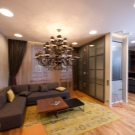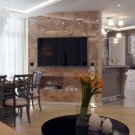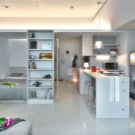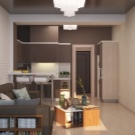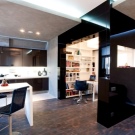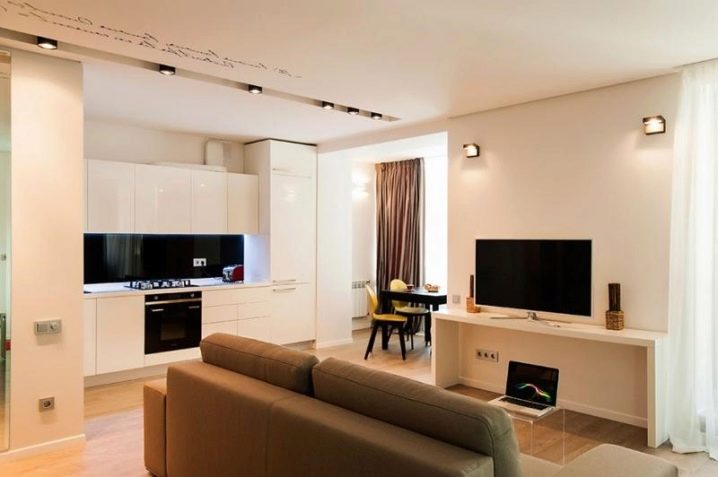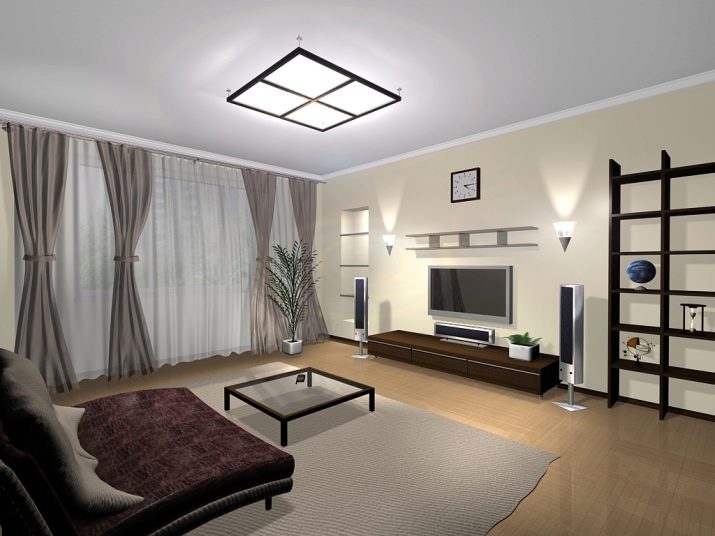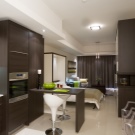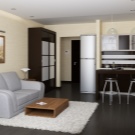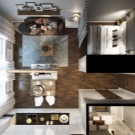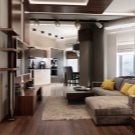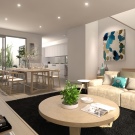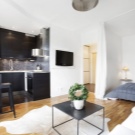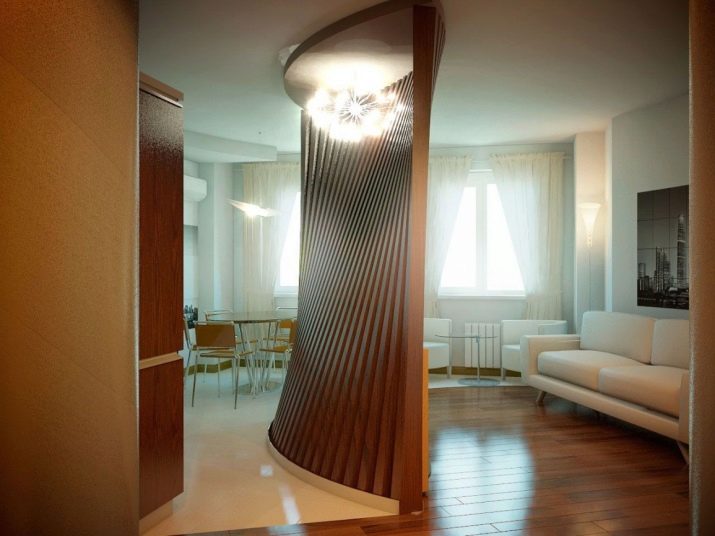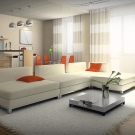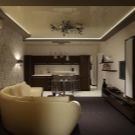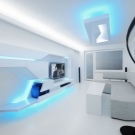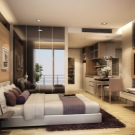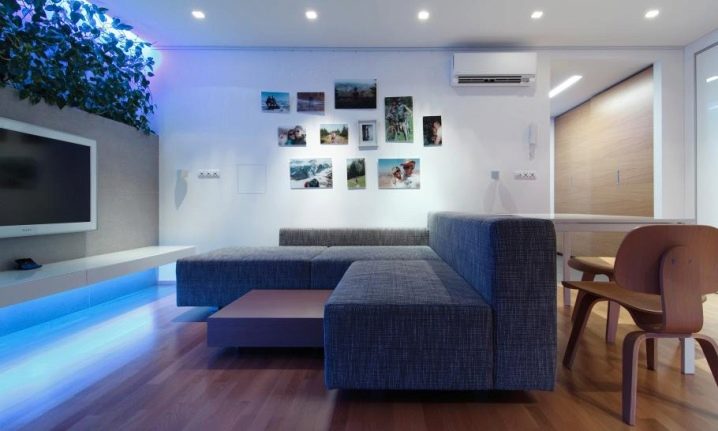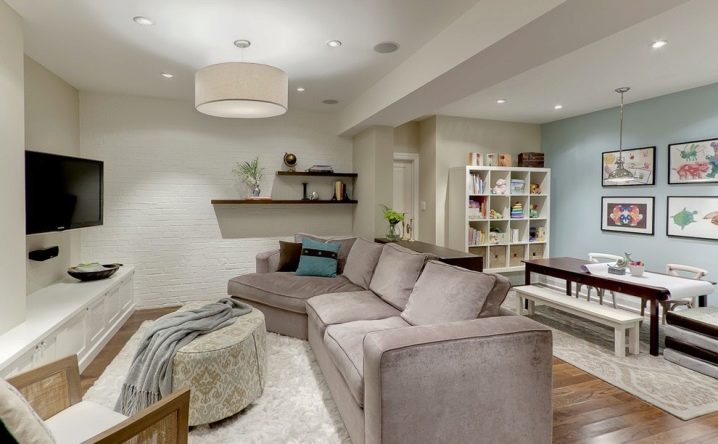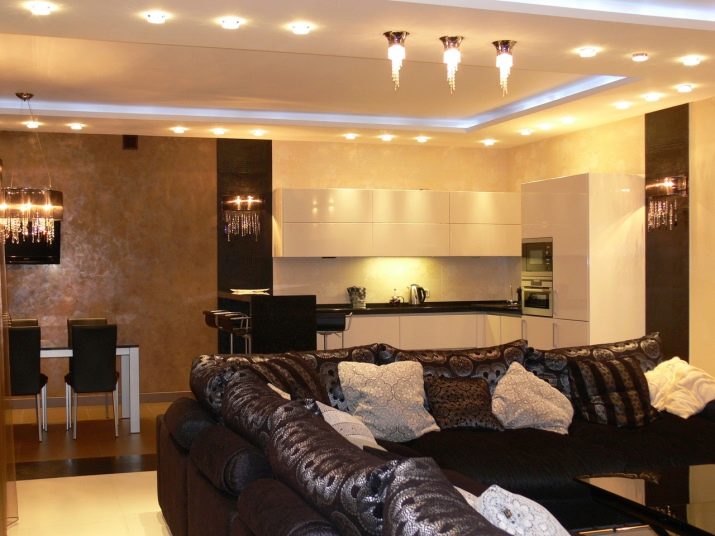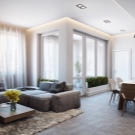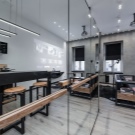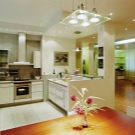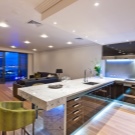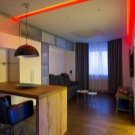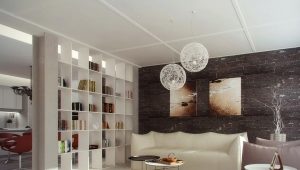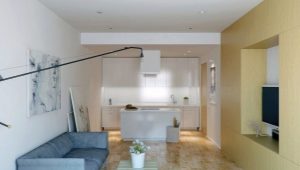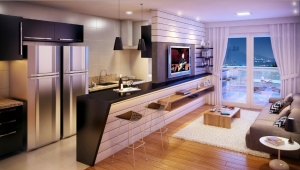Lighting in a studio apartment
The very concept of a studio apartment involves a free layout of the room without pronounced partitions. Here the division into zones appears rather conditionally. The most common areas are the kitchen and living room. If the area of the apartment allows, it is possible to allocate a bedroom and a study.
When planning a lighting system for a studio apartment, a small area cannot be overloaded with an excessive number of lamps. This will further emphasize the closeness of the room. Light sources should give a feeling of confidence that everything is in place.
Lighting in a studio apartment, as well as in another room, is natural and artificial. To achieve the best result, you need to correctly combine both of these light sources. In this case, the lack of the first must be compensated by the second.
Natural
If the windows of the apartment overlook the shady side and the sun in the room is a rare guest, you should not close the windows with blackout curtains.It is better to hang a light organza or a transparent veil. In addition, you should avoid the use of dark colors in the interior, limiting only a small interspersed in the form of individual accessories.
Artificial
As for artificial lighting, it must be multi-level in order to fully cover all functional areas. There are several unspoken rules for the use of artificial lighting.
- If the apartment is small, but it has a lot of natural light, then it should be lit evenly.
- If the dominant tone of the apartment is dark, it is better to divide it into several zones with the help of additional lamps and fixtures.
- Neutral white light must be used as working light.
- If you want to pay attention to some accents in the interior, use colored lamps and lamps for this.
- Creating deep shadow areas in the studio apartment is not desirable.
There are several types of lighting:
- General lighting. The main source is often used chandelier. Additional light sources are provided by ceiling lights, which can be located around the perimeter of the room, or are concentrated in the center of the ceiling.Lamps built into suspended ceilings, or in suspended plasterboard structures, look very nice.
- Zonal. Such illumination assumes that a group of luminaires is located in a certain area of the room: a food area, a living room, a study, a recreation area, and others. To enhance the visual effect of separation, various combinations of lighting fixtures and other light sources are possible. For example, it is possible to effectively separate one zone from another by using LED cords. Such tapes can provide explicit or hidden illumination. A softer glow is provided by appliances hidden in the ceiling structures, in the kitchen, under the wall cabinets.
It is better not to use the same type of lighting for all zones. In this case, the interior is boring and monotonous. You can mark their functional limits with the help of wall sconces, floor and table lamps. In addition to separating tools, they will also perform a decorative function.
If you competently combine different types of lighting, the apartment will be not only stylish, but also comfortable.With a successful alternation of different light sources and shadows, you can hide the existing drawbacks and highlight the strengths of the room.
Types of lighting
- Incandescent lamps. Their light is familiar and comfortable to the human eye. But if there are too many incandescent bulbs in a small room, they will heat the air and it will be stuffy in the apartment.
- Fluorescent lamps. They are also called energy saving. The first generation of such lamps was characterized by a sharp bright light, irritating eyesight. However, modern fluorescent lamps have many nice looking shades, so they can easily compete with incandescent lamps.
- Halogen lamps. They are characterized by a faint glow, so they are often used in the design of individual elements of the interior. They can very well be placed in various niches, arches, decorative partitions. They are used to target the illumination of paintings, photographs, sculptures.
- LEDs. They are very durable, besides they do not heat up and are not harmful to health. However, the light output of such devices is extremely small, so they should not be considered as the main source of light.In the interior of the studio, they can play the role of a night light or auxiliary lighting of individual elements. Their dim glow can relieve tension after a hard day, and rest your eyes.
- Optical fiber. Light in such devices comes only from the front side, so they are also used as an additional design. Chandeliers and lamps with the use of multi-colored optical fiber threads create a sense of celebration and magic.
The design of the space of a studio apartment is somewhat different from the design of the other apartments. Therefore, when the light separation of such premises should pay special attention to detail. At the same time, it is necessary to take into account all the nuances: how many people live in an apartment, what kind of lifestyle they lead, what habits and occupations each of them have.
If this is a young couple who leads an active lifestyle and only appears in the apartment closer to the night, perhaps the kitchen area should be made small, highlighting it with halogen lamps.
If this is a family with a child, care should be taken of the sleeping space for the child. Near the crib you can hang a dim nightlight with a fabulous theme.And from the bed of the parents, it can be fenced off with a translucent curtain, through which a soft, dim light will make its way.
A few recommendations for competent lighting design studio apartments.
- Lamps should overlap with the general idea of the interior and be combined in style, creating an overall picture of the apartment. In addition, each of the zones should be different from the rest.
- The sleeping area would be appropriate to designate one or more dim lights.
- Even if the kitchen area is quite small, good lighting of the dining table and cooking zone is required. In this case, the lamps themselves should be positioned so that they do not create a shadow on the working surface.
- Decorative lighting can be present at several different levels, ranging from overhead lighting throughout the room and ending with spot target lights in specific areas.
- In rooms with a low ceiling is better to use lamps with reflectors. If you send them up, they will visually lift the overhanging ceiling, giving the room a few extra centimeters of height. Conversely, if the ceiling is too high, use the ceiling directed downwards.
